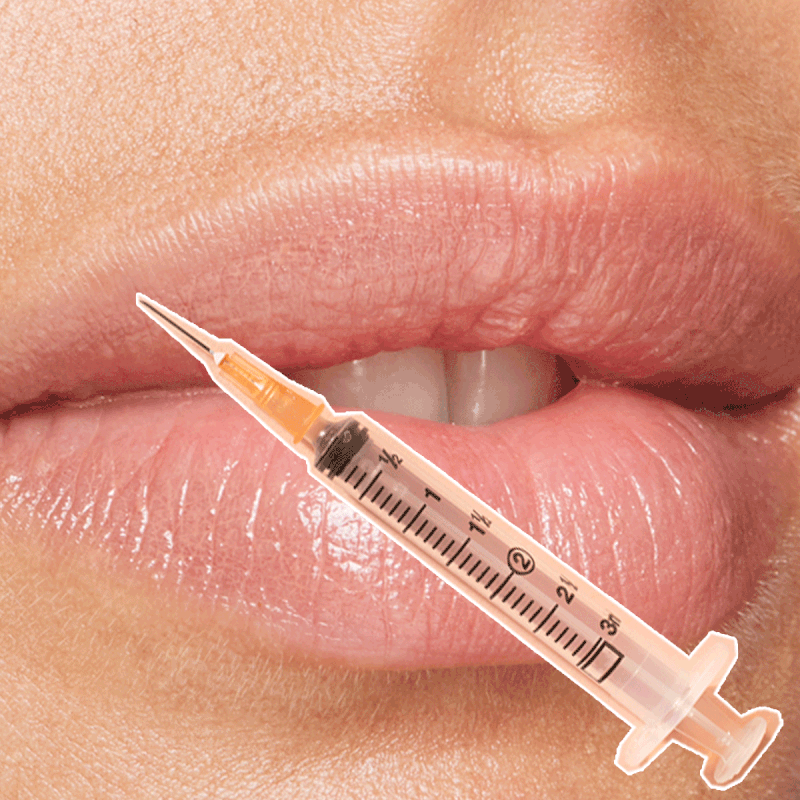Lip Fillers: What You Should Know Before Having Them
Understand The Ingredients
“Filler is usually made up of collagen or hyaluronic acid,” explains Dr. Richard Sibthorpe. “The collagen works to plump, while hyaluronic acid lifts and retains water within the lip for a smooth, more natural effect. As for the procedure itself, an anaesthetic numbing cream is applied 20 minutes pre-procedure. Once it’s taken effect, small amounts of filler are administered to line and define, based upon where it’s needed and what you’ve discussed with your practitioner. It’s also worth noting that when done properly, pain is minimal. Not least because the latest dermal fillers contain lidocaine, which takes effect as soon as the product is injected and makes the entire process more comfortable.”
Take A Less-Is-More Approach
“One of the greatest problems with lip filler is that people have far too much too soon,” explains Dr. Wassim J. Taktouk. “Clients often worry about the amount of filler being injected rather than the end result. It’s far better to augment the lips incrementally over a period of time to get the right result, so start by taking it slow. People forget that it’s all about balancing the facial aesthetics, rather than the ‘bigger the better.’ It’s also worth acquainting yourself with your lips and making sure your treatment provider never fills outside of the vermillion border (the border of your lip.) When this happens, product can bleed upwards, resulting in the appearance of a shelf at the top.”
Find A Good & Safe Practitioner
“The industry isn’t regulated so you really need to do your research,” says Richard. “The reason so many lip fillers go wrong is because treatments are performed by someone who is not medically qualified and has not received adequate training. Combine that with an increasing number of people seeking cheaper treatment, and it’s easy to see why things can go so wrong. Check your practitioner’s credentials. Ask to see before and after pictures of patients they’ve treated. Find out which brand of filler they use and why. Don’t be afraid to ask. Trust you’re putting your face in the right hands.”
Be Realistic
“Consider the look you want and what can be achieved with your current lip shape and size,” advises Wassim. “It’s very important to be realistic – if you have small lips, sometimes just asking your practitioner to enhance the contour of the lip is enough to achieve a big result.”
Factor In Down Time
“You need to prepare for possible bruising or swelling, and allow time for it to die down,” adds Richard. “You don’t want to have the procedure right before a big party or event. Allow one to two weeks for lips to settle down post-treatment. It’s also important to stay away from alcohol or exercising on the day (and day after if possible), as this can increase swelling and tenderness. As a general rule, bruising should settle after a couple of days.”
Know Your Options
“There are some great alternatives to filler now,” adds Wassim. “These include radio frequency, like Exilis, which stimulates collagen production for a plumped-up effect. Topical creams that give temporary plumping are also proving to be popular, as is the injection of resilient hyaluronic acids (RHA) - a stretchy type of filler that moves with your lips and mimics their natural movement for a believable finish.”
Keep Up With The Maintenance
“It’s important to remember that lip fillers are temporary – not permanent. You can expect the results to last between 6-12 months,” says Richard. “Once the filler wears off, your lips will return to how they looked before the procedure, so top-ups are necessary and a key thing to consider before you take the plunge is whether you can keep up with the maintenance costs.”
Ignore The Common Misconceptions
“There are plenty of misconceptions surrounding lip fillers, namely that they are only for people with thin lips, and that they can increase your risk of cold sores,” adds Richard. “The former is somewhat true, as lip fillers are used for adding volume, but they can also be used to adjust an undefined cupid’s bow, correct asymmetry and focus on upturned corners, and even dry or cracked lips. As for the latter, dermal fillers are totally sterile. People who have a history of cold sores are more likely to experience them after a procedure since it puts stress on your lips, but they don’t make you more susceptible.”
Remember Everyone Is Different
“During a consultation, it’s key to discuss your goals and the areas you’d like to focus on,” adds Richard. “There is no set approach to administering fillers or an amount of filler used – everyone is different and requires a bespoke treatment plan. The key is to have an experienced practitioner who has a detailed understanding of lip anatomy. He or she will be able to accentuate key areas, without using too much filler, to create a look that’s natural to you and fits with your features.”
Be Aware Of The Side Effects
“Other issues can include lumps, bumps and oversized or uneven lips, especially if the treatment is performed by someone who’s inexperienced,” says Wassim. “Keep an eye on these types of symptoms, and if you see no improvement within 24 hours, go back to your provider straight away.”
SL recommends these three places…
1. Dr Maryam Zamani, visit DrMaryamZamani.com
2. Dr. Richard Sibthorpe, South Kensington, visit DoctorSib.com
3. Dr Wassim Taktouk, London SW7, visit DrWassimTaktouk.com
DISCLAIMER: We endeavour to always credit the correct original source of every image we use. If you think a credit may be incorrect, please contact us at info@sheerluxe.com.


